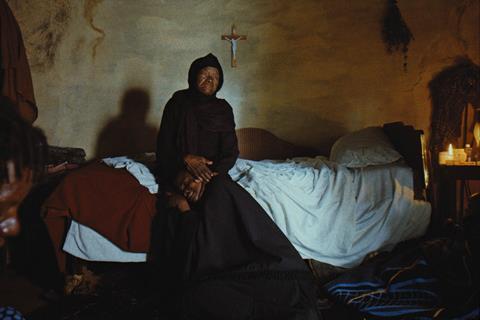A striking debut from Lesotho made under Venice’s Biennale College initiative

Dir/scr: Lemohang Jeremiah Mosese. Lesotho/South Africa/Italy. 2019. 119 mins
An elderly woman’s grief becomes the catalyst for a community’s growing defiance in writer/director Lemohang Jeremiah Mosese’s mesmerising fictional debut. This Is Not A Burial, It’s A Resurrection offers a vivid, beautifully crafted reflection on identity, community and the tension between respecting age-old traditions and accepting the seemingly unstoppable march of progress. Carrying influences that seem to range from Souleymane Cisse to Ciro Guerra, it marks out Mosese as a notable new voice in African cinema.
Within the story of one woman’s impact on her community, Mosese is able to touch upon a range of issues
The measured pace and complex mix of issues may find This Is Not A Burial labelled a “festival film” - made under the auspices of Venice’s Biennale College Cinema - it premiered there last year before competing in Sundance’s World Cinema Dramatic Competition - but some theatrical possibilities could lie at the adventurous edges of arthouse distribution.
There is a noir-like feel to the early scenes of the film. A narrator (Jerry Mofokeng Wa Makhetha) sits in the gloomy shadows of a bar as a glitterball twirls from the ceiling trailing snowflakes of light. He plays a lesiba and sets the scene with tales of drowned cities where you can still hear the church bells tolling beneath the waters.The striking score by Yo Miyashita adds a further unsettling element.
In a village called Nasaretha, nestled in the mountains of landlocked Lesotho, 80 year-old widow Mantoa (Mary Twala Mhlongo) is awaiting the return of her son who works in the gold mines of South Africa. The news of his death is the latest blow to a life marked by loss and grief. Now, she longs for the peace that will only come with her own death. Then she learns that her homeland has been chosen as the site of a dam. Residents will be forcibly resettled and the graves of family and friends will soon lie underwater. “What will my horse graze on in the capital?”, asks one resident. Mantoa’s opposition to what initially seems inevitable begins to influence the attitudes of others in Nasaretha.
Mosese observes the rituals and traditions that bind a community with the eye of a documentary maker. We are witness to the plowing of the fields,the sowing of crops and events that are unchanged down the generations. Mosese and cinematographer Pierre de Villiers vividly highlight the contrast between light and dark. Interiors feel pitch black whilst the fields and valleys are bathed in sunlight and festooned with herbs and wild flowers.
It is an undeniably beautiful film with a colour palette consistent through the production design and costumes that favours burnished turquoise and aquamarine alongside variations of copper and gold.
Within the story of one woman’s impact on her community, Mosese is able to touch upon a range of issues from the role of religion in Lesotho to the trustworthiness of local politicians, the sense of identity rooted in a specific place and the legacy of colonialist interventions. The thematic richness finds its cohesion in the presence and performance of Mary Twala Mhlongo who invests Mantoa with a stern dignity and steely determination. Her lined, weather-beaten features are constantly scrutinised in lingering close-ups that celebrate Mantoa as the heart and conscience of her village.
Production companies: Urucu Media
International sales: Memento, mathieu@memento-films.com
Producers: Cait Pansegrouw, Elias Ribiero
Production design: Leila Walter
Editing: Lemohang Jeremiah Mosese
Cinematography: Pierre de Villiers
Music: Yu Miyashita
Main cast: Mary Twala Mhlongo, Jerry Mofokeng Wa Makhetha, Makhaola Ndebele






















